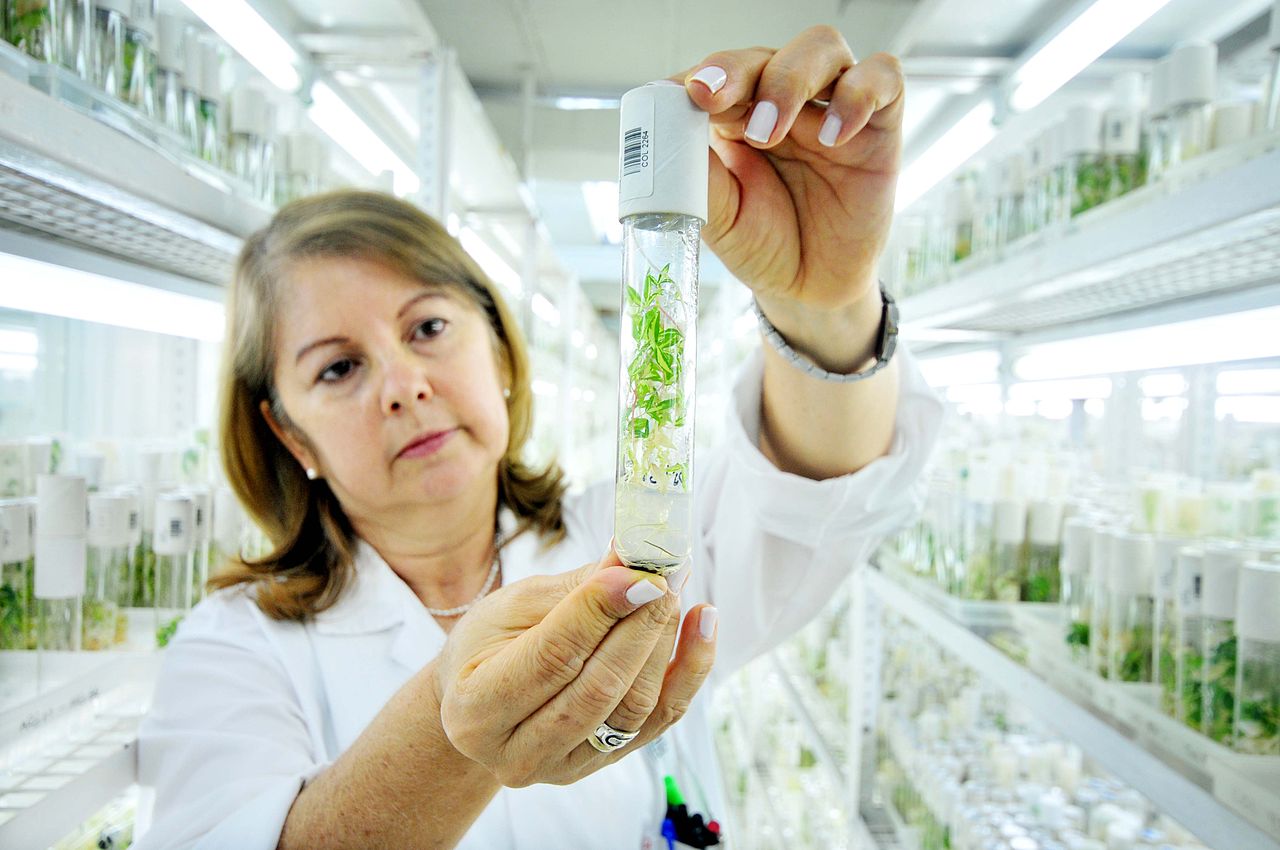Science Writer Questions Magazine’s Support for Biotech Solution to Replace Pesticides
On April 19, 2018, Yale Environment 360 ran an article on the use of gene editing, including the controversial RNA Interference (RNAi) technology, to develop biodegradable “vaccines” intended to protect crops from pathogens. According to the author: “As the world looks to feed more and more people, this and other emerging technologies hold promise for producing more food without using chemical pesticides.”
Regeneration International founding member Judith Schwartz raised concerns about the article in this letter to the editors of Yale Environment 360, which is published at the Yale School of Forestry & Environmental Studies:
To the editors:
I am writing from Emporia, Kansas, where I have been attending a farming conference. On Thursday, speaker Jonathan Lundgren expressed concern about agricultural chemicals and their detrimental effects on pollinator and beneficial insects. He said that RNAi technology was being rapidly brought out and that, despite high risks and unknown consequences, would soon be touted as the next great thing.
Less than 24 hours later, I read Richard Conniff’s article, “Can ‘Vaccines’ for Crops Help Cut Pesticide Use and Improve Yields?”
As a journalist covering land management, I am extremely disappointed in the lack of skepticism demonstrated in this reporting. Any distinction between this and “chemical pesticides,” or for that matter, “genetic engineering,” is merely semantic; if gene editing is not considered genetic engineering that’s only because the companies say so. As we do not know if this technology is safe, how can we be sure that non-targeted genes are not deactivated?
The consequences of this could be dire. This could dangerously impact insect, plant and/or mammal species and ecological stabilities. This at a moment when we are seeing insect populations plummet (something your publication has covered). For even if this “works” as planned, the insects killed are crucial to the food chain and therefore beneficial/predator insects suffer.
On what basis does the writer assume that these pest-management technologies are needed? Is your journal also suggesting this? There are a growing number of farmers who are working with nature by means of no-till, cover-cropping and other ecological practices, who are finding that the best means of managing problem insects is biodiversity: the other insects that prey on them. Such farmers have been able to grow healthy crops while markedly reducing and often eliminating herbicides and pesticides. Independent research has shown that pesticide-treated croplands often have far more pests and impacts than untreated cropland.
Aren’t problem pests a symptom of an out-of-balance ecology? Could not this RNAi experiment throw the ecology even further out of balance? How would this address the underlying problem, rather than merely boost the sale of pesticides? Furthermore, why should farmers accept the claim that this provides enhanced “precision?”
In talking to farmers—something your reporter might have considered—they often ask salesmen whether beneficial insects would be harmed by these biocides and are assured that they won’t be. Unfortunately, that may not be the case.
While the “we need to feed the world” angle is often used by agricultural chemical companies, we can already produce enough food to feed ten billion people; the challenge is in distribution, nutrient density and affordability. Nor is this the job of industrial agriculture. More than 70 percent of the world’s food is grown by small-holder farmers in the developing world. Meanwhile, a “food producing” state like Kansas imports 90 percent of its food.
Is YaleE360 endorsing these RNAi inputs? What liabilities could result from misinformation in this area?
While many admire YaleE360’s reporting, is this article naïve and uncritical? This would be extremely concerning in a publication that many turn to for thorough, unbiased journalism. Given the limited research on RNAi technology that is not funded by entities that would benefit from its use, isn’t more critical analysis required?
I would encourage your editorial staff to run an objective piece that goes into more details on the implications of RNAi technology and considers pest management alternatives.
Respectfully yours,
Judith D. Schwartz
Author of: “Cows Save the Planet and Other Improbable Ways of Restoring Soil to Heal the Earth” (Chelsea Green Publishing) and “Water In Plain Sight: Hope for a Thirsty World” (St. Martin’s Press)

